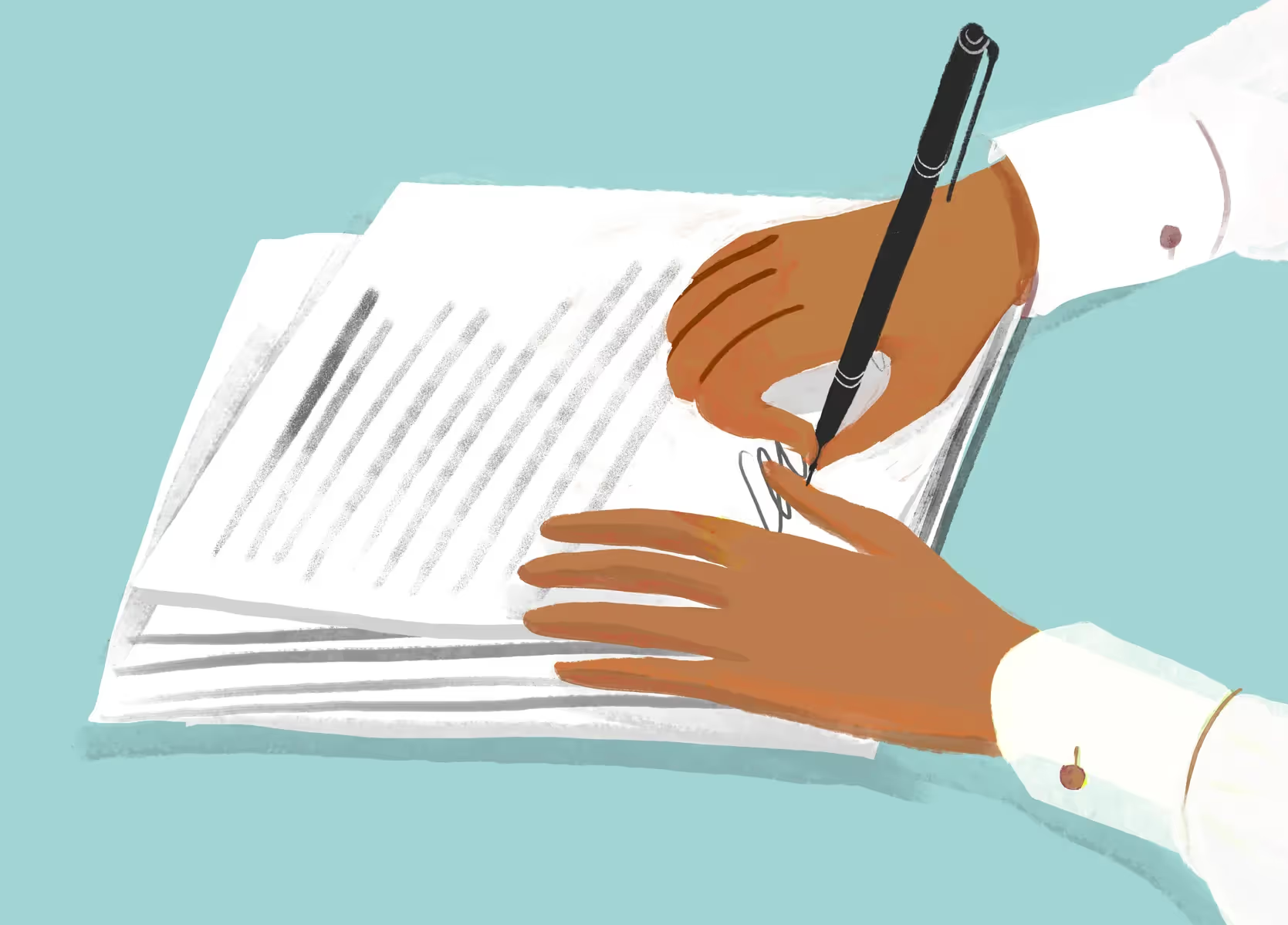
How to create cost-saving procurement workflows
Learn the importance of streamlined workflows and strategies for success.

Procurement workflows are essential guidelines and procedures that help businesses and finance teams streamline their purchasing processes for goods and services. Efficient procurement workflows contribute to the overall success of an organization by minimizing errors, reducing costs, and ensuring transparency and accountability.
In this comprehensive overview, we discuss the importance of procurement workflows, their key components, strategies for streamlining, challenges faced in optimization, and best practices for continuous improvement. The insights provided here will help businesses configure and maintain robust procurement processes, driving growth and innovation while mitigating risks.
What are Procurement Workflows?
Procurement workflows are the guidelines and procedures followed by a company to obtain goods or services. It includes the entire process, from the identification of requirements, supplier selection, delivery to payment. Procurement workflows ensure transparency, accountability and control over the purchasing process. By providing a clear and standardized process, procurement workflows help in minimizing the risk of procurement fraud and errors, and reduce the workload on procurement teams.
How Procurement Workflows Save Companies Time and Money
Efficient procurement workflows are more than a managerial preference; they're a vital component in reducing operational costs and saving time—both valuable resources that can be reallocated to fuel growth and innovation. The role of procurement workflows within the overall procurement process is to act as a blueprint for purchasing, ensuring that each step—from identification of needs to payment—occurs in a systematic and controlled manner. Below are specific ways in which optimized procurement workflows can be a game-changer for companies:
How Procurement Workflows Fit into the Procurement Process
In the grand scheme of procurement, workflows serve as the roadmap that guides various processes, people, and technologies towards a unified objective: cost-effective and timely acquisition of quality goods and services. Workflows standardize the process, making it easier for teams to follow a set pattern that minimizes errors, ensures compliance, and fosters supplier relationships. This type of organized setup is far less prone to inefficiency and helps keep operational costs in check.
When procurement workflows are not clear or are poorly managed, the resulting opaqueness can lead to a plethora of issues, including but not limited to, missed deadlines, budget overruns, and even regulatory fines. When there’s a lack of transparency, the chance for errors and fraud increases, leading to potential legal complications and reputational damage.
How Procurement Workflows Are Beneficial
- Risk Mitigation: One of the primary uses of a procurement workflow is to mitigate risks by ensuring that all steps are standardized and documented. This not only ensures compliance but also offers a paper trail that can be audited for performance and transparency.
- Data-Driven Decisions: With standardized workflows, data collection becomes easier. Analytics and KPIs can then be leveraged for future procurement decisions, enhancing efficiency and delivering cost savings.
- Enhanced Communication: A well-defined procurement workflow establishes a formal communication path, minimizing misunderstandings and delays that can occur when information is lost in translation between departments.
- Supplier Negotiation and Management: Procurement workflows help in maintaining good supplier relationships. Predefined workflows give procurement professionals more time to focus on negotiating better terms, thereby saving money.
- Forecasting: When procurement workflows are integrated with inventory management, financial forecasting becomes more accurate. Accurate financial planning further aids in resource allocation and overall corporate strategy.
- Quality Control: Workflows can incorporate quality checks at various stages, ensuring that the received goods meet the required standards. This saves the costs associated with returns and reorders.
Procurement workflows are an indispensable tool for modern businesses, enabling them to operate more efficiently, improve supplier relationships, and achieve sustainable growth. By adopting best practices and continuously seeking to optimize these workflows, companies can unlock substantial time and cost savings, driving their success in today's competitive marketplace.
Key Components of Procurement Workflows
A well-designed procurement workflow streamlines operations, minimizes risks, and contributes to overall business success. It’s crucial to understand the distinction between procurement and purchasing. Procurement is a broader concept encompassing the entire process of acquiring goods and services, starting from identifying needs to maintaining supplier relationships. On the other hand, purchasing is a sub-process within procurement that focuses specifically on the transactional aspect of acquiring goods and services. The following key components form the foundation of an effective procurement workflow:
Needs Identification and Requisition
Identifying the needs of a company is the first step in an effective procurement workflow. Without this, the entire procurement process would be baseless. All other tasks hinge on the needs of the company, and without this clarity, procurement can become more of a burden than a solution.
It is vital to ensure that needs are identified with great detail to avoid complications downstream in the process. Once needs are identified, requisition forms should be filled by authorized personnel within the organization who will then transmit them to the procurement team. This initial stage is critical to the success of any purchase request.
Supplier Selection and Evaluation
Choosing the right supplier is crucial to the success of the procurement endeavor. The supplier must not only meet the immediate needs of the organization but also align with the company's future goals. A proper evaluation of the supplier will ensure that they possess the right experience, skills, and resources necessary to meet the company's needs.
In this way, the procurement team can rule out bogus suppliers, saving the company from disappointing outcomes. Before supplier selection, a cross-functional team should be created, enabling opinions from all departments involved. A proper evaluation of the supplier should include a review of financial stability, reference checks, and contractual specifics.
Request for Quotation (RFQ) and Bidding
In the procurement process, requesting quotations for products or services is essential. This stage usually comes after supplier evaluation, where several suppliers have been shortlisted, and a Request for Quotation or Proposal is presented. This process ensures that the procurement team receives several bids, which they can then compare to find the best match for the company's needs. Bidding is an effective way to reduce procurement costs and ensure that the goods or services requested are of high quality.
Purchase Order Management
After the best match supplier has been chosen, a Purchase Order (PO) is created. This document provides clear instructions stating the specifics of the products or services to be ordered, and it must be accurate for the approval process. Meticulous attention to detail must be applied at this stage to avoid discrepancies and delivery delays. The procurement managers and team must also ensure that the PO complies with agreed terms and conditions.
Goods Receipt and Quality Control
The procurement process does not end with the acceptance of goods or services. The procurement team must ensure that the products are received in excellent condition and meet the desired specifications. In ensuring quality, the procurement team must have a standard and robust quality control process. Proper inspection of both products and services must be conducted to ensure that the supplier delivers based on the PO's specifics.
Invoice Processing and Payment
Invoice processing and payment is a vital procurement stage where attention to detail must be upheld. All invoices should be inspected to verify that they match the pricing and terms agreed upon in the PO. When invoices are approved, invoices should be paid timely to avoid any future discrepancies. Listing all unpaid invoices and including them in the cash flow reporting will help ensure that invoices are paid promptly.
Contract Approvals
Contract approvals are vital in procurement, especially for long-term supplier relationships. This process ensures clear terms and minimizes disputes. Initially, the procurement and legal teams draft a contract outlining terms, conditions, and obligations. This document sets the framework for the relationship, covering key points like payment terms, delivery schedules, and quality standards.
The drafted contract undergoes a thorough review to ensure it complies with organizational and regulatory standards. After any necessary revisions and negotiations, the contract moves through the formal approval chain within the organization. Once approved, it is signed by both parties, cementing the terms of the relationship.
Supplier Relationship Management
Nurturing supplier relationships is vital to develop trust and lasting partnerships. It is essential to encourage open communication lines between suppliers and the procurement team. Supplier relationship management is a continuous process that swings both ways, and the procurement team must dedicate time and effort to maintain lasting relationships. Positive and long-lasting relationships with suppliers can contribute to cost savings, innovation, and risk reduction.
Types of Procurement Workflows
Different purchasing models, such as procure-to-pay, require different procurement workflows. Below are some examples:
- Direct Purchasing Workflow: Used for straightforward, one-off purchases. It is a shorter workflow that often involves just the purchase requisition and purchase order steps.
- Contract-based Purchasing Workflow: Ideal for long-term supplier relationships. It involves additional steps like contract drafting, review, and approval.
- Blanket Purchase Order Workflow: Used for recurring purchases. The initial stages (like requisition and supplier evaluation) are only conducted once, and the workflow focuses more on invoice approvals and vendor management.
- Just-in-Time Purchasing Workflow: Ideal for industries that require rapid inventory turnover. It's similar to the direct purchasing model but with an added emphasis on tight delivery schedules.
- Consignment Stock Workflow: Involves special terms and conditions where payment is made only after the goods are sold.
Strategies for Streamlining Procurement Workflows
Centralize Procurement Processes
Streamlining a company's procurement workflows requires more than just an efficient approach to purchasing goods or services. By centralizing the procurement process, organizations can create a unified system of identifying, sourcing, and acquiring products, reducing the number of errors that occur as information flows through different departments. Not only does it reduce operational costs, but it also improves compliance and transparency, allowing for better communication and collaboration across various departments. Centralization optimizes procurement workflows by providing a clear chain of command, establishing accountability, and enhancing risk management practices.
Automate Repetitive Tasks
Automation plays a crucial role in streamlining procurement workflows by freeing up time to focus on higher-value activities, such as vendor negotiations. Automating tedious, repetitive tasks such as purchase order creation, invoice processing, and payment scheduling can eliminate the need for manual data entry and reduce the risk of human errors, resulting in fewer delays and improved accuracy. Moreover, automation enables unprecedented visibility into the procurement process, ensuring that all the systems and processes are performing effectively and efficiently, resulting in better-informed decisions.
Standardize Documentation and Procedures
Procurement consists of a complex set of processes, including requisitions, purchase orders, invoices, and more. Standardizing documentation and procedures is crucial for streamlining procurement workflows, ensuring that all requests and approvals are structured and follow set guidelines. Standardization reduces errors, enhances accountability, and increases visibility throughout the procurement process. It also allows better tracking of funds and helps build trust with vendors, as the documentation is clearly defined, transparent and reliable.
Implement a Robust Supplier Management System
Procurement workflows rely heavily on supplier relationships. Implementing a robust supplier management system streamlines procurement workflows by centralizing supply chain management and facilitating effective communication between stakeholders. It also enables procurement teams to make informed decisions when selecting and evaluating suppliers, ensuring that they can deliver quality goods and services, aligning with business objectives.
Utilize Data Analytics and KPI Tracking
Utilizing data analytics and KPI tracking can improve procurement workflows by providing insight into areas of improvement within the procurement process overall. KPIs, such as purchase cost variation, order accuracy, supplier response time metrics, and more, can provide a standardized measurement system to track and evaluate procurement workflows.
Data analytics can help procurement professionals identify trends and potential issues, enabling them to make informed decisions, improve performance, and reduce costs. The insights gained from data analytics and KPI tracking can help organizations identify and prioritize where to focus their improvement efforts.
Overcoming Challenges in Optimizing Procurement Workflows
Resistance to Change Within the Organization
Overcoming resistance to change is a common challenge faced by organizations when optimizing procurement workflows. Even when new processes promise to increase efficiency and improve the bottom line, employees may be hesitant to adopt them. This hesitation can stem from a fear of the unknown, a preference for the status quo, or a lack of understanding of the benefits of the changes.
To overcome resistance, it’s important to involve all relevant stakeholders in the decision-making process, clearly communicate the rationale behind the changes, and provide comprehensive training and support to employees as they navigate the new workflows. Zip's user-friendly interface can make the transition less daunting for team members. Offering features like automated approval workflows, the tool naturally guides users through the new processes, minimizing room for errors and resistance.
Ensuring Data Security and Privacy
Ensuring data security and privacy is a paramount concern for businesses in today's digital world. This is particularly true when it comes to procurement workflows, which rely heavily on sharing sensitive information with various vendors and stakeholders. To safeguard against data breaches and other security threats, organizations must implement robust data protection measures, such as firewalls, encryption, and access controls.
It's also important to establish clear policies and procedures around data handling and to provide regular employee training to ensure that everyone is aware of their responsibilities and risks. By taking a proactive rather than reactive approach to data security, companies can minimize their exposure to threats and maintain the trust of their customers and partners.
Aligning Procurement Workflows with Overall Business Goals
Aligning procurement workflows with overall business goals is critical to maximizing their value to the organization. Without a clear understanding of how procurement fits into the larger strategic picture, it can be difficult to prioritize investments, allocate resources, or measure performance.
To achieve alignment, businesses should start by identifying their core objectives and then considering how procurement can support them. This may involve streamlining processes, building stronger relationships with suppliers, or implementing new technology solutions. Zip can be configured to align with the unique objectives of your organization. With real-time visibility and tracking, decision-makers have the data they need to understand how procurement activities support broader business goals.
Achieving Stakeholder Buy-In
Achieving stakeholder buy-in can be extremely challenging when optimizing procurement workflows. As procurement affects multiple departments, functions, and teams across an organization, it’s important to get everyone on board with the changes. This requires effective communication and engagement strategies, as well as a willingness to listen to feedback and incorporate it into the planning process.
Stakeholders may also need to be incentivized to participate, through rewards or recognition for helping to implement new workflows. Ultimately, by building a coalition of support among stakeholders, businesses can accelerate the adoption and success of their procurement optimization efforts.
Best Practices for Continuous Improvement
Regularly Review and Update Procurement Workflows
In the world of procurement, nothing stays stagnant for long. Market trends and industry norms constantly shift, and keeping up is the name of the game. To optimize procurement workflows, it's important to regularly review and update your strategies.
This process means taking a hard look at every step of the process, identifying bottlenecks, and finding ways to streamline. Additionally, staying abreast of the latest innovations and software solutions can help you make the most of your resources, while minimizing waste and delays. By committing to continuous improvement, you'll position your organization for maximum efficiency and success.
Encourage Open Communication and Feedback
Effective communication is key to any successful organization, but in procurement, it's especially critical. Encouraging open feedback and dialogue between teams can help identify areas for improvement, uncover potential opportunities for cost-saving, and ensure that everyone is working towards the same goals. This means making a concerted effort to create a company culture that values input and rewards collaboration. By fostering an atmosphere of openness and trust, you'll empower your team to identify and execute on innovative solutions, boosting your bottom line and your reputation.
Invest in Training and Development for Procurement Staff
Investing in your workforce is one of the most important ways to ensure long-term success in procurement. This means providing ongoing training and professional development opportunities to help staff keep their skills sharp and stay ahead of changing industry trends. Beyond simply providing training, it's important to create opportunities for staff to grow and advance within the organization. By showing a commitment to the personal and professional growth of your team, you'll build a loyal and motivated workforce that's dedicated to your shared success.
Stay Informed on Industry Trends and Best Practices
To optimize your workflows and achieve the best possible results, you need to stay informed on industry trends and best practices. This might mean doing regular research, attending conferences, or networking with other procurement professionals. You can stay on top of the latest trends by subscribing to Zip’s Margin Makers. Ultimately, the goal is to be aware of emerging concepts and technologies that can enhance your processes and help you achieve your objectives more efficiently. By leveraging the latest innovations and tools, you'll stay competitive, achieve cost savings, and set yourself up for long-term success.
Procurement Workflows with Zip
Zip is a powerful procurement orchestration platform designed to streamline and optimize procurement workflows, enabling teams to manage spend more efficiently and strategically. By leveraging Zip's innovative features, procurement teams can easily navigate the complex landscape of supplier selection, approval, and management.
Key Features of Zip for Procurement Workflows:
Automated Approval Workflows: Zip automates vendor approval workflows, reducing manual efforts and accelerating the procurement process. This allows procurement teams to focus on strategic sourcing while ensuring that all purchases follow the correct approval flows.
Vendor Consolidation and Overlap Detection: Zip ingests and categorizes existing vendors, automatically flagging any overlap in services or products. This helps organizations reduce redundant vendors, optimize spend, and increase their leverage in negotiations.
Real-Time Visibility and Tracking: With Zip, procurement teams gain real-time visibility into their purchase and vendor request pipeline. This enables better decision-making and more efficient management of the procurement process.
Enhanced Collaboration and Communication: Zip fosters open communication between procurement, finance, legal, IT, and other stakeholders by providing a centralized platform for managing approvals and tracking progress.
Scalable Procurement Operations: Zip empowers procurement teams to control spend and scale their operations by ensuring that all purchases adhere to established approval workflows and minimizing the addition of redundant vendors.
By integrating Zip into your procurement workflows, you can unlock the full potential of your procurement operations, achieving cost savings, improved efficiency, and long-term success. Experience the transformative power of Zip for your procurement workflows by scheduling a demo today. Take the first step towards optimizing your procurement processes and driving business growth.

Maximize the ROI of your business spend

Enter your business email to keep reading



























.webp)




















.avif)













.avif)










.webp)





.avif)











.avif)
